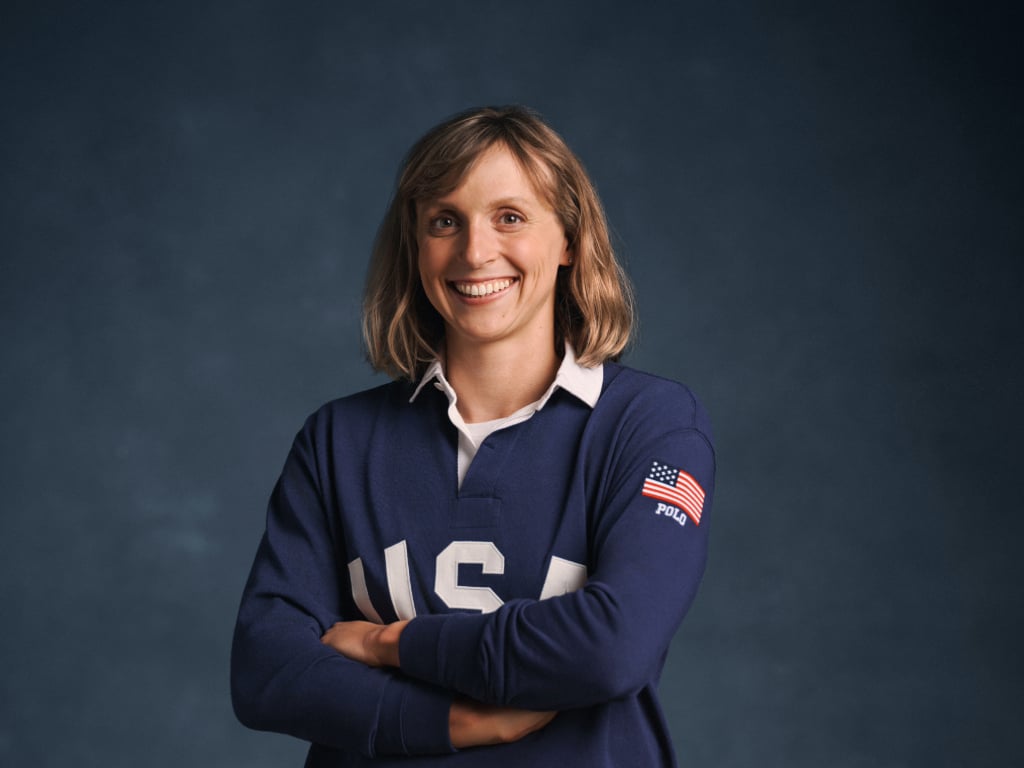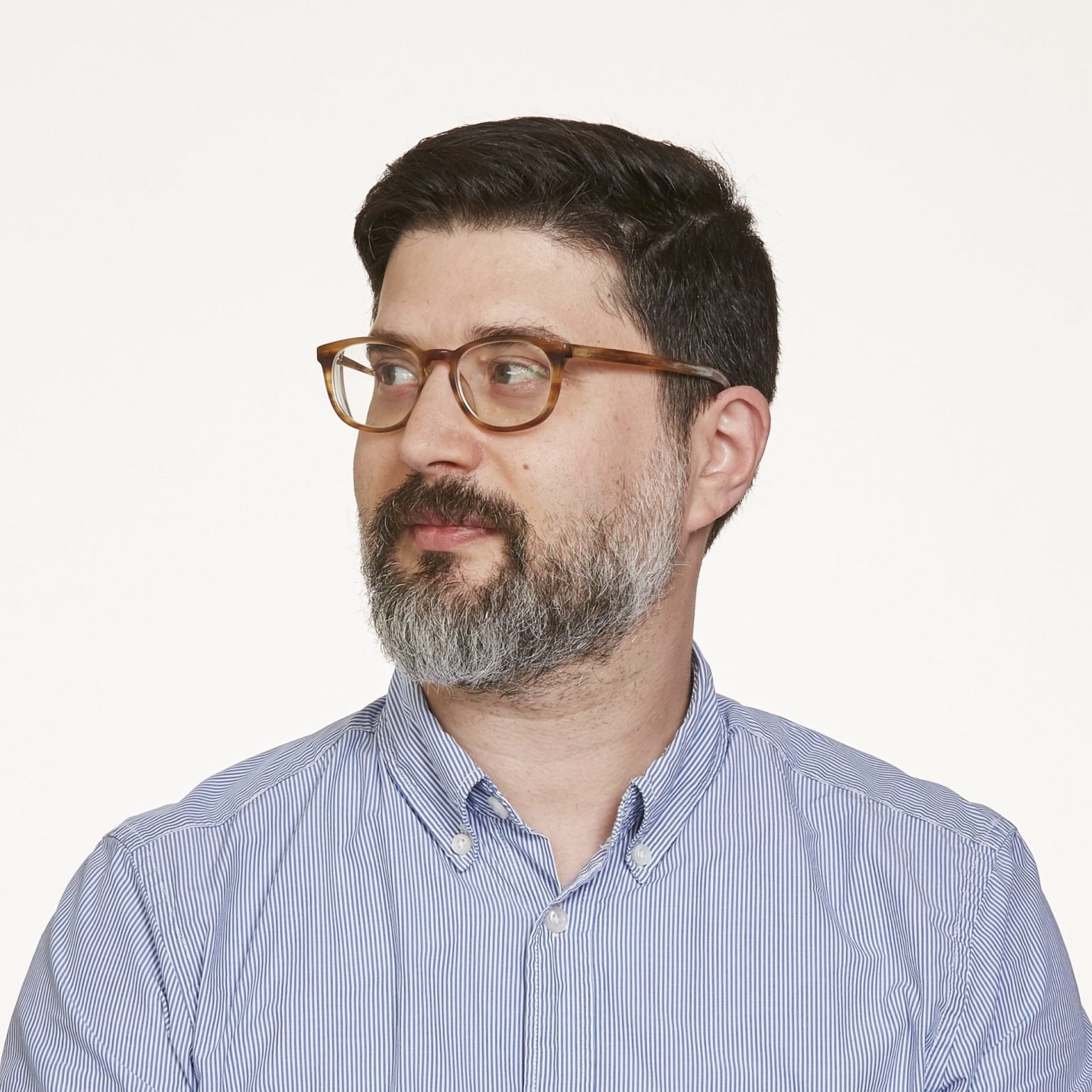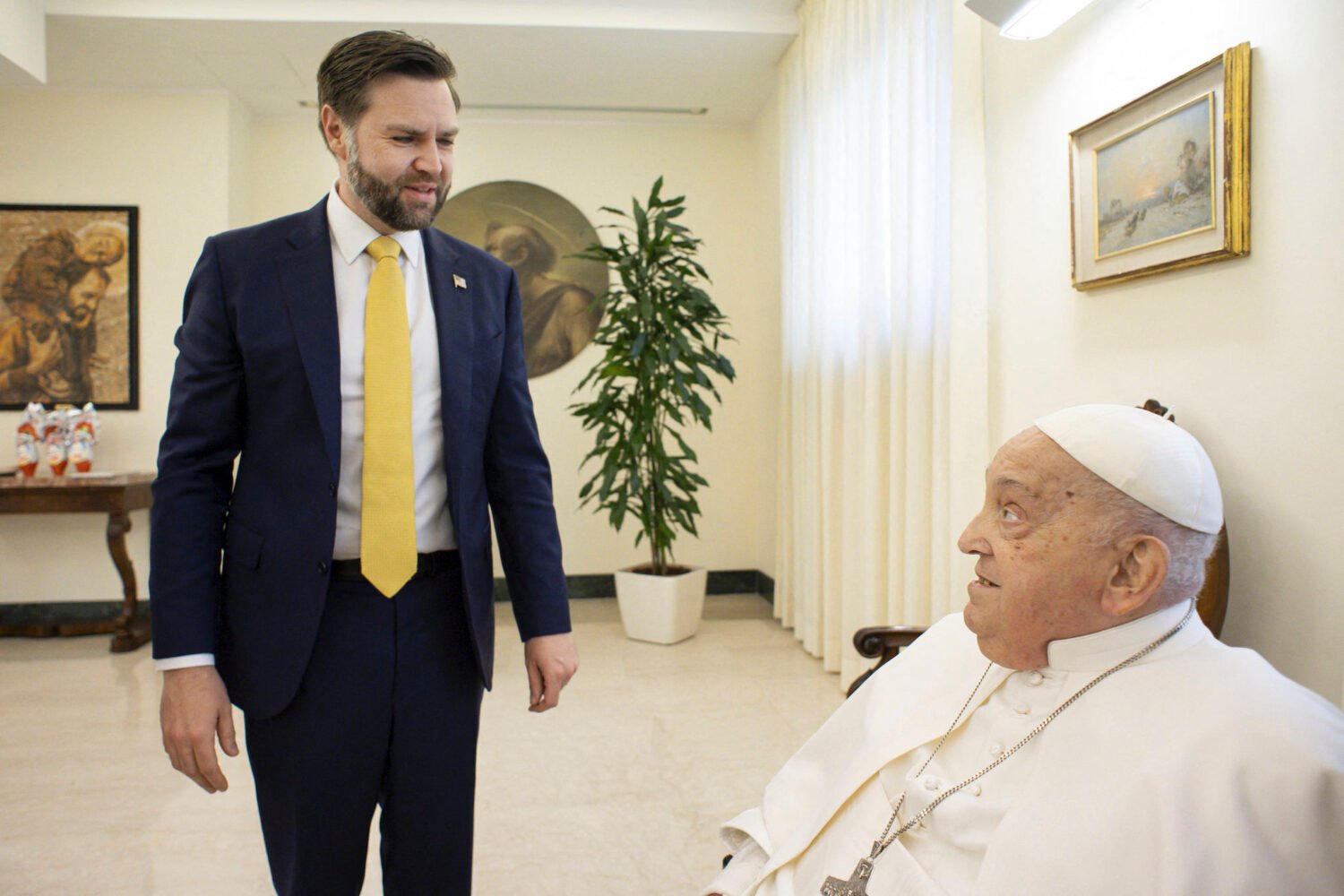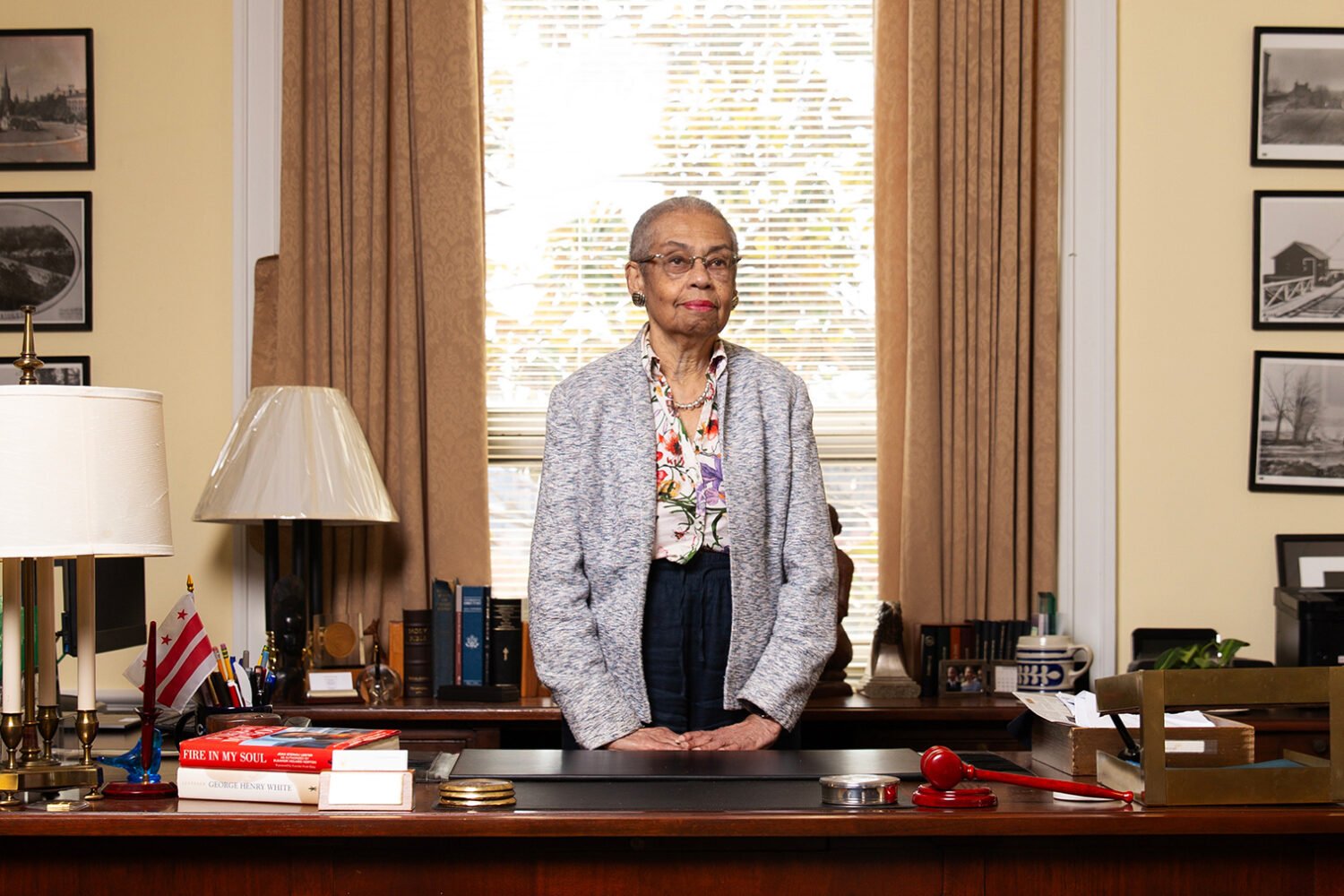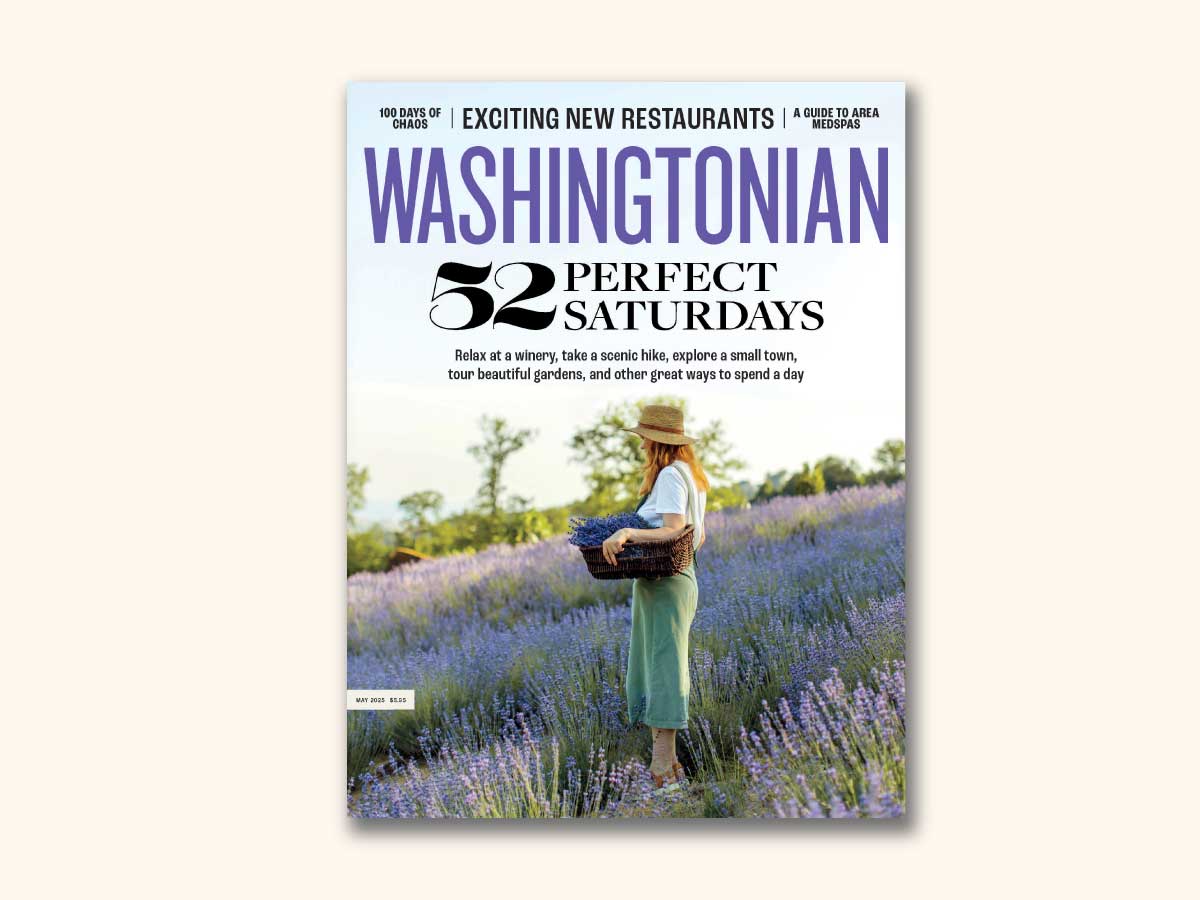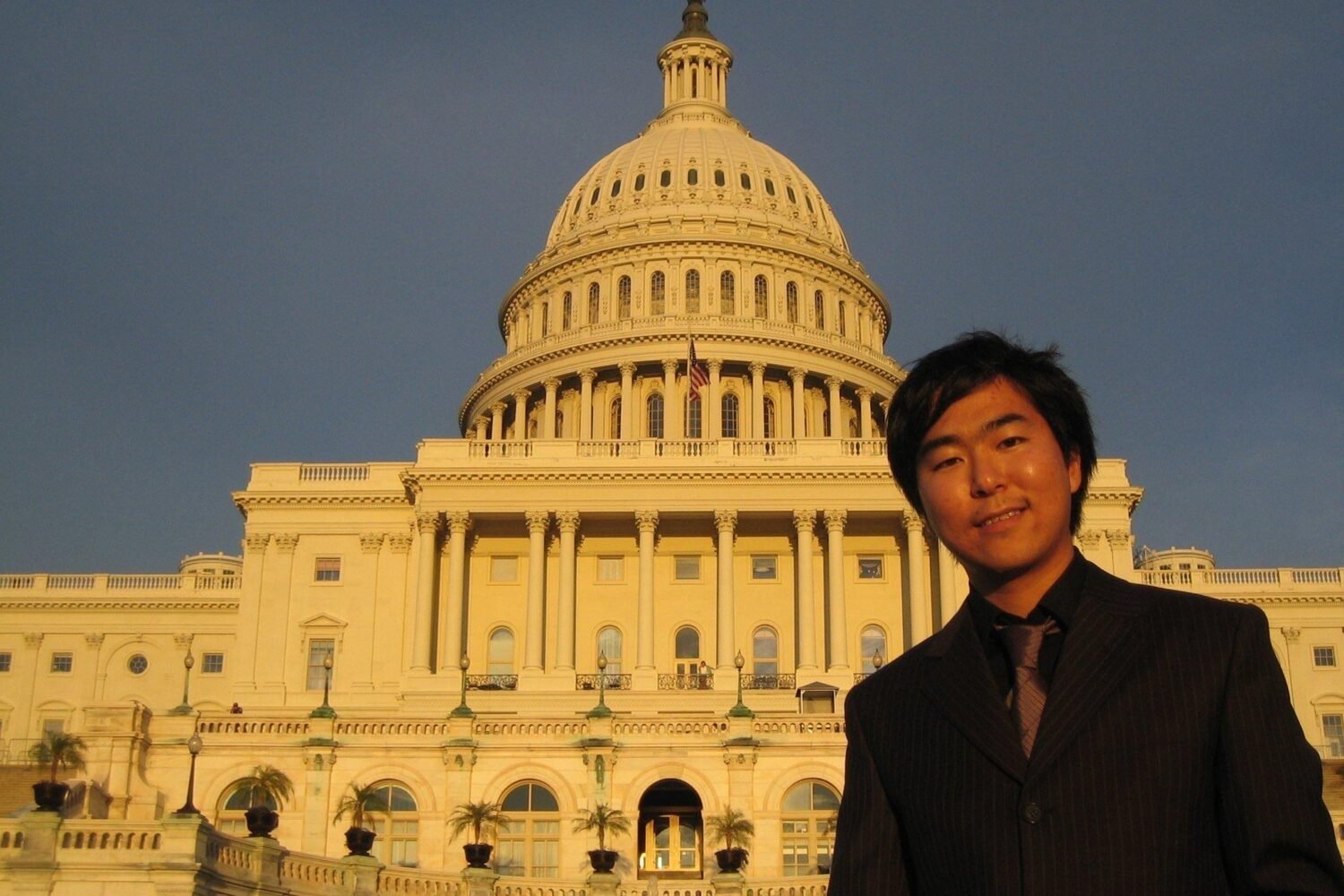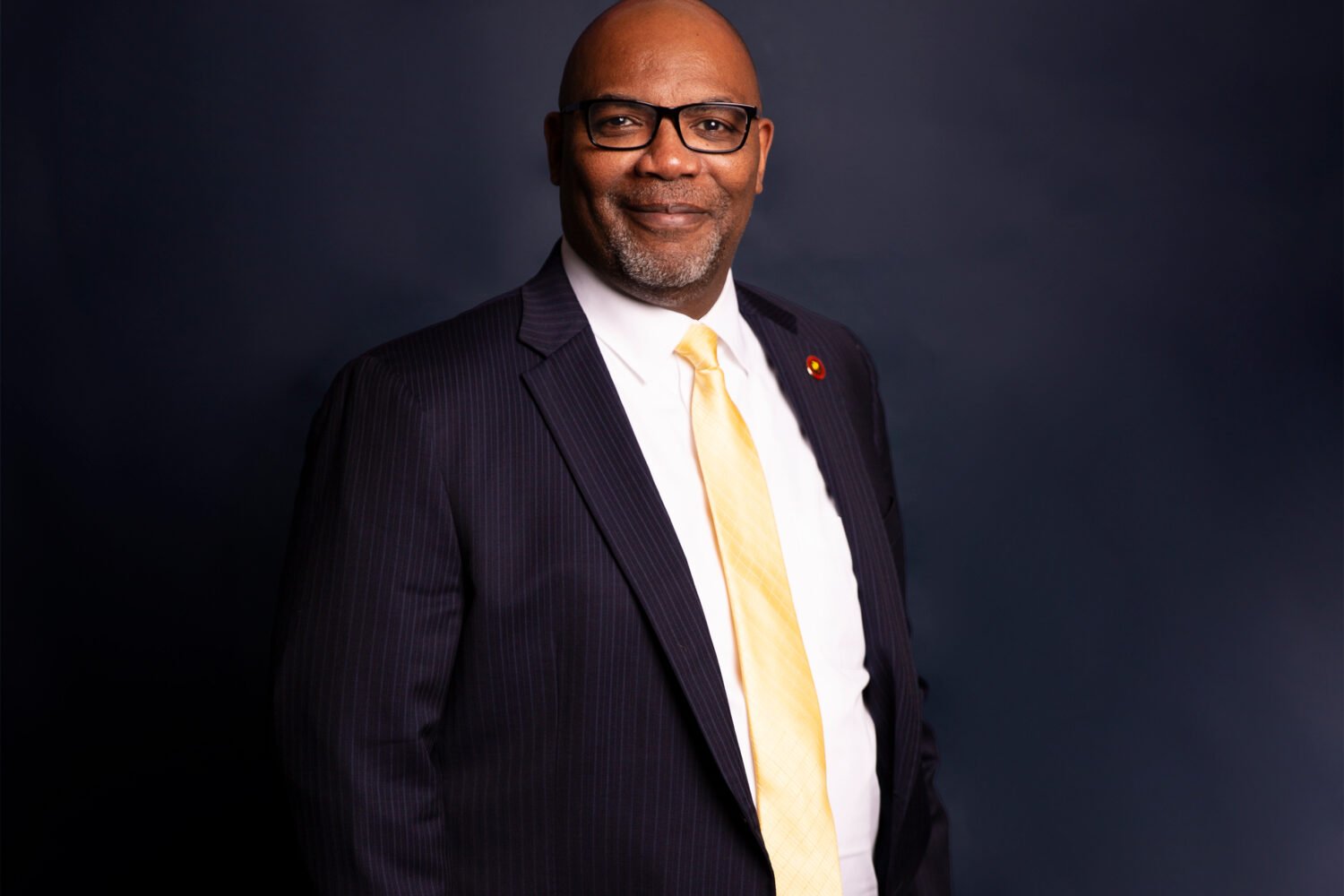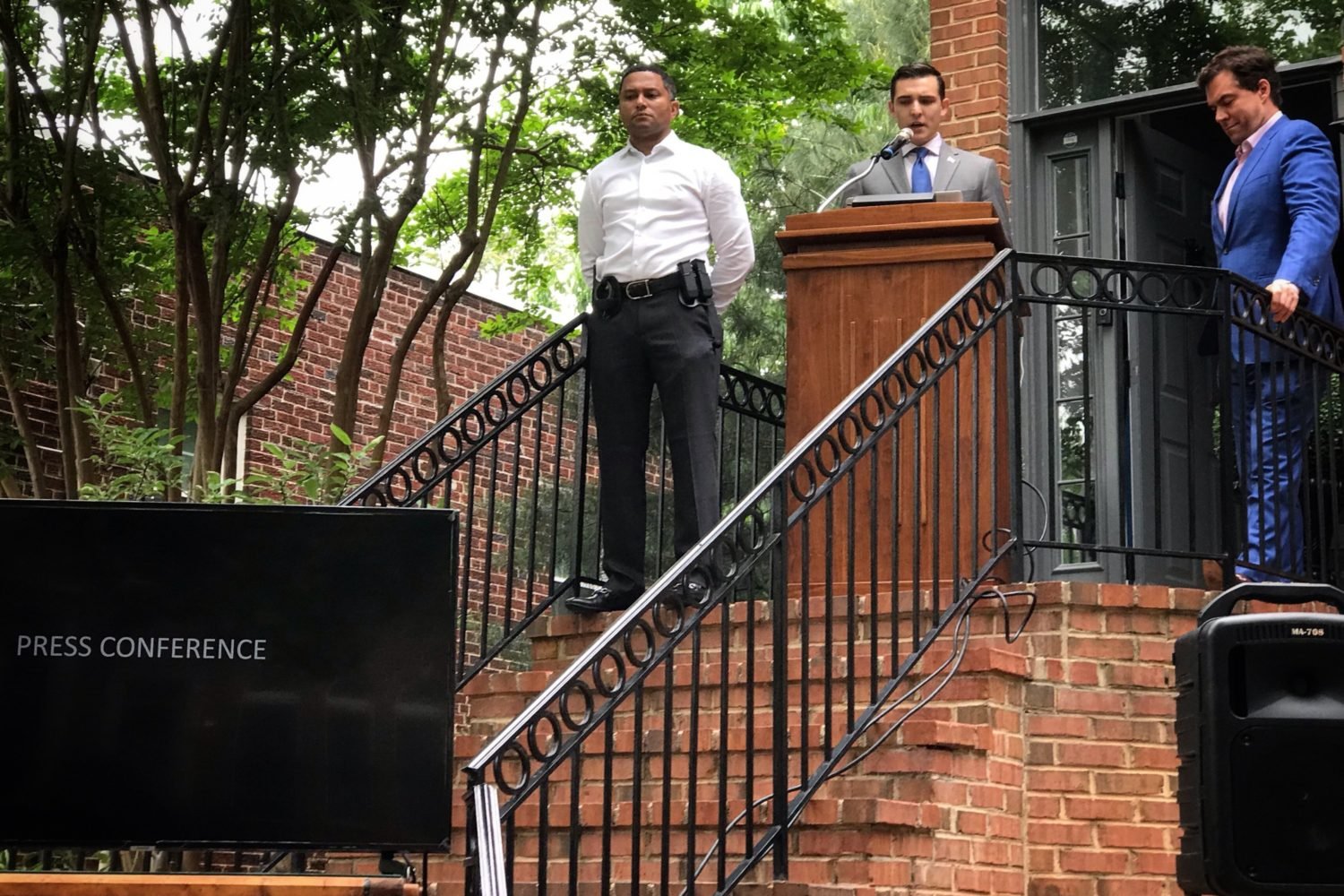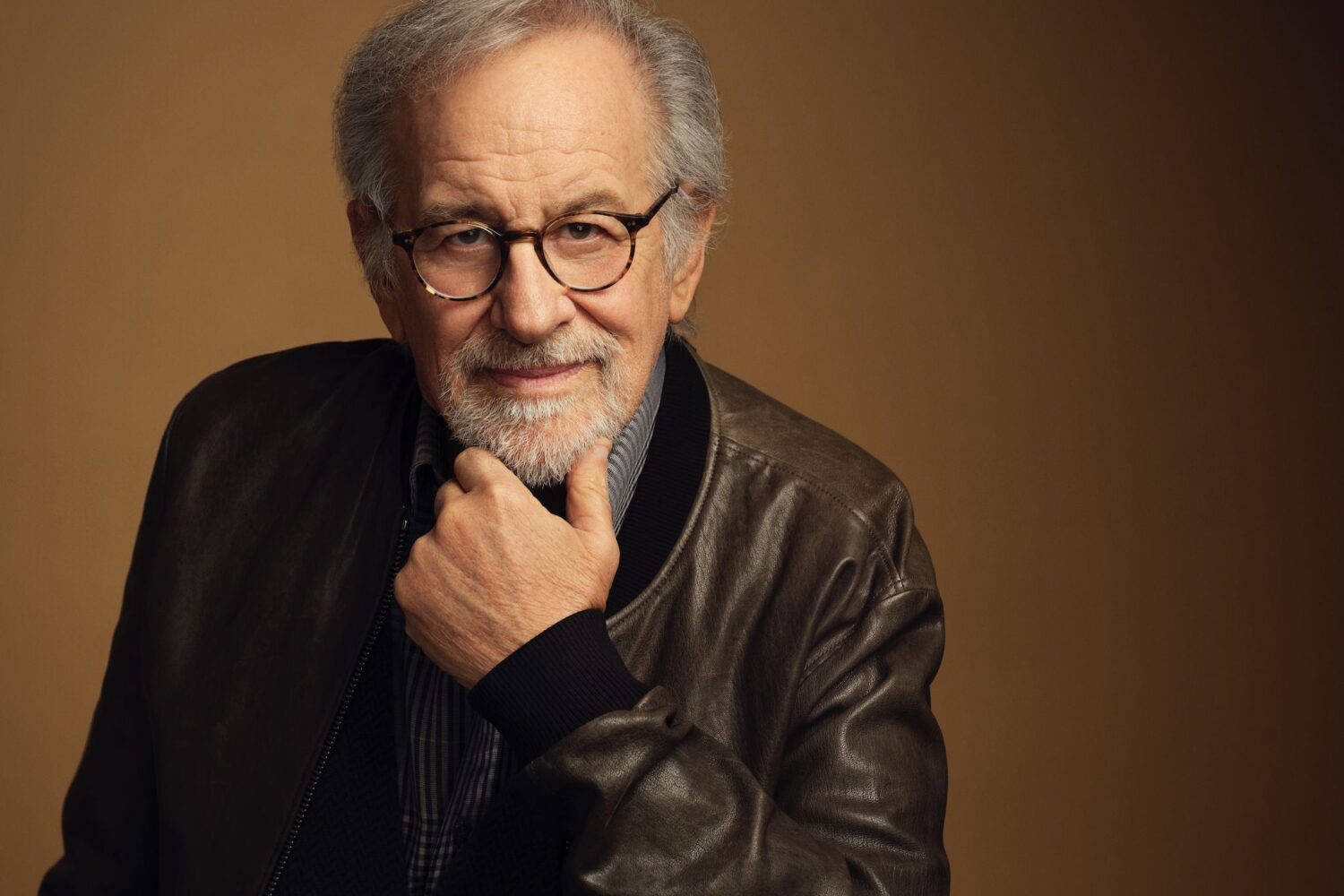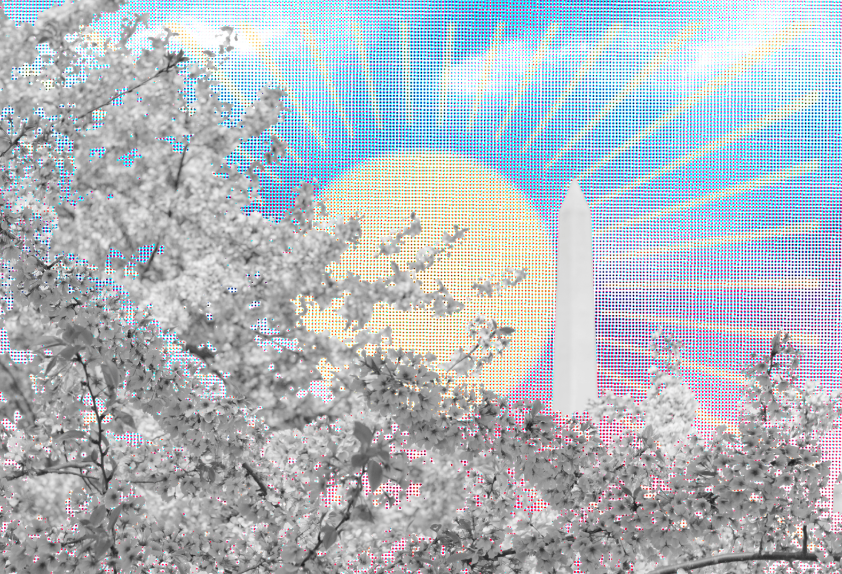Katie Ledecky was a 15-year-old unknown when she climbed onto the starting block for the 800-meter freestyle final at the 2012 London Olympics. Hometown favorite Rebecca Adlington had been expected to win, but Ledecky shocked the swimming world with a dominant performance, earning the first of her seven lifetime Olympic gold medals. She now holds 21 world-championship golds and a slew of jaw-dropping stats, making her one of history’s most accomplished swimmers.
Ledecky has lately been training for this summer’s Paris Olympics, which will be her fourth (assuming she qualifies, as is expected). She’s also finding time, between strenuous sessions in the pool, to promote her new memoir, Just Add Water. The book traces her rise from a pool-loving kid in Bethesda, where she grew up, to the record books and international fame.
Ledecky hopes to continue racing at least through the 2028 Los Angeles Olympics, but there’s no way to know for sure. “I can’t tell you right now when that last race might be,” she says. “After this summer, I’ll take it year by year.”
Just like you, I was a member of Palisades pool in Cabin John as a kid and spent a ton of time there. How would I have done if I had swum against you back then?
Oh, well, I don’t know much about your swimming years!
Let’s just say I was a Marco Polo swimmer rather than being on the swim team like you were.
Well, I was a Marco Polo swimmer, too. You know, I was a proud Palisades Porpoise, so I would be pretty competitive with anyone I was up against.
In other words, I was not going to beat you in the pool. But okay, what about Palisades’ actual most competitive sport: ping-pong?
[Laughs.] Yeah, I was pretty competitive at ping-pong, too. My brother and I played a lot of ping-pong. I haven’t played in quite a while, but whenever I get back to Palisades, that’s probably what I do more of than the swimming. Usually I go at the end of the summer during my one week off. I splash around in the pool a little bit, but then I play, you know, an hour of ping-pong with my brother.
Most people can relate to the desire to get better at something that’s really hard. As somebody who’s put such a huge amount of effort into trying to get better and better, do you have any advice?
Yeah, the biggest thing, for me, has been goal-setting. When I was starting to swim, I never imagined I would make it to even one Olympics. And really, it just took a lot of goal-setting. I started it from a very young age: I just gradually improved and started qualifying for bigger and bigger meets until the next meet to qualify for was the Olympic trials. And at that stage, I started really setting my goals higher—for medals and then world records. It’s important to set some goals that scare you at first, that seem almost unreachable or, some may say, impossible. I think those scary goals can really inspire you to work hard and push to that next level. They just become more and more realistic and more and more possible as you keep working.
You write in the book about how swimming combines buoyancy and resistance—being in the water makes things easier and harder at the same time. Why do you like that combination?
I’ve just always been drawn to it. I never remember being scared of the water or concerned with how cold the water might be or anything like that. I really only have happy memories of popping in the water at a young age. And then as I’ve gone through the sport, you’re challenged by the water as you’re trying to find ways to get faster; there’s an unlimited number of ways to get better. You’re trying to work with the water and not fight the water. There’s always something to try to improve in that relationship with water.
Since you mentioned it, what is your strategy for dealing with a freezing pool?
[Laughs.] I don’t think about it too much. Usually, if the water is extra cold, then all my teammates will be groaning about it; we all kind of commiserate together. But usually once I dive in, it’s time to go. I don’t dilly-dally. The faster you move, the warmer the water will get.
So I went and watched a video of the 2012 London Olympics 800-meter final, when you surprised everyone by winning. It’s exciting to watch—the announcers really underestimated you at first. How does it feel watching that now?
I’ve seen it so many times that I probably don’t have the same feeling as I did the first 100 times I watched it. But probably every day for the first 100 days after [the race], I watched it. I mean, it was like a dream for most of it. When I flipped at the 600 mark, it was like waking up and I was able to really soak in the last 200 meters. It was a pretty surreal few days and weeks after that. I still get a little emotional watching it and thinking how far I’ve come after that first experience when people doubted me.
On the video I watched, one of the announcers toward the end, when it’s clear you’re going to win, says you’re “somebody who’s going to become very famous very suddenly.” In the pool, did you know your life was about to change?
I definitely wasn’t thinking of that. That last 200, all I kept saying to myself was “Don’t mess this up, don’t mess this up.” [Laughs.] You know, “You’ve got this.” I was certainly not thinking of any ramifications or what my life was going to become after that. I don’t think I even knew what it would be like. I was pretty focused on the race.
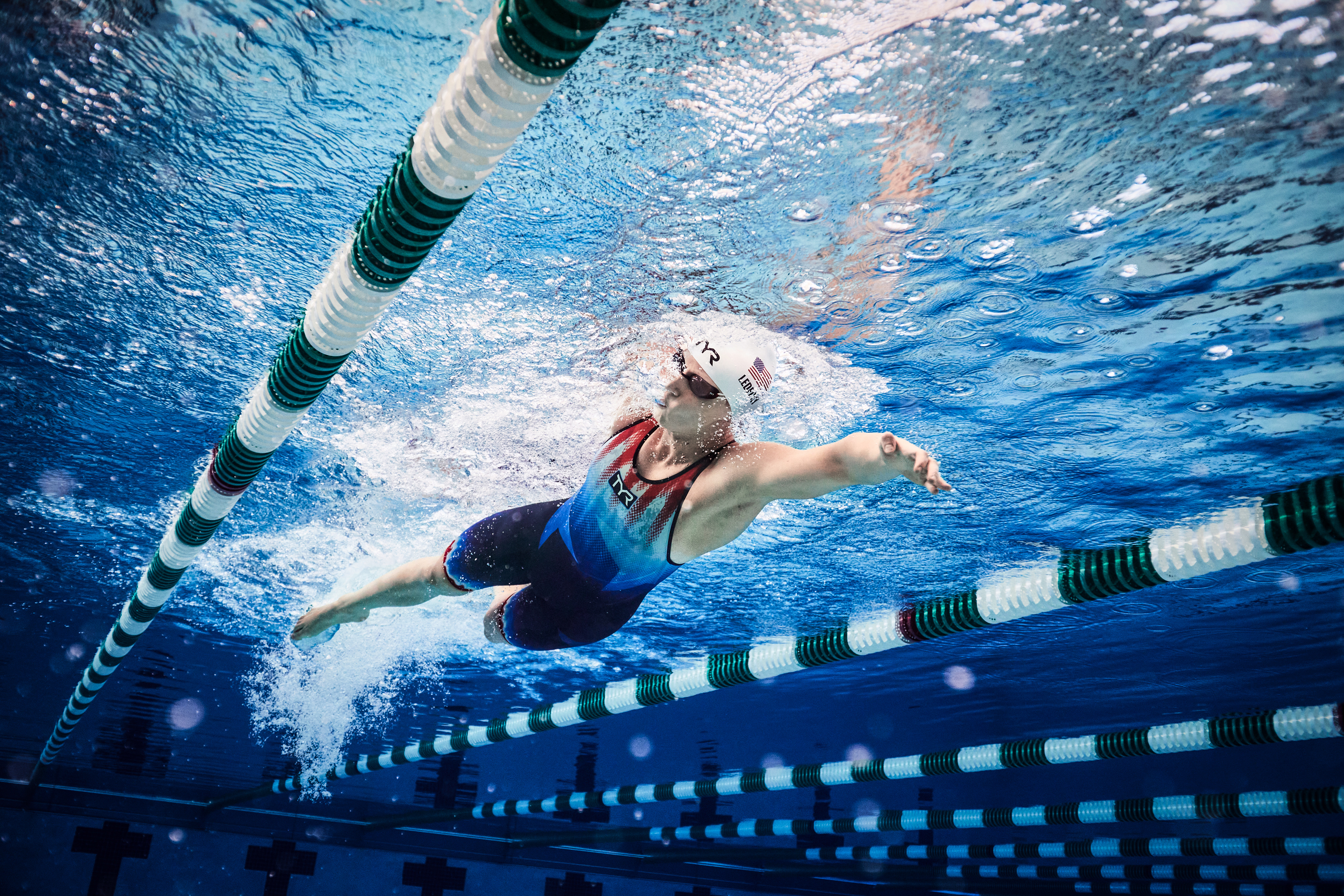
What do you wish people who don’t know much about swimming understood better about what you do?
A lot of people think that as a distance swimmer especially, it’s just up and down the pool, lap after lap without stopping, and it can be kind of solitary. Some people have this notion that training can be grueling and hard. And yes, it is. But it’s not just lap after lap. We have different sets during practice, and I’ve got my teammates by my side and we have music on the pool deck. Sure, it’s a lot of meters that we’re swimming. But it’s a really fun sport and I’ve got really great people around me.
Yet at one point in the book, you estimated that you were swimming 135,000 laps in a year. That is a lot of laps! I get that it can be fun and not totally solitary. But what is it like to spend that much time in your own head?
Yeah, I mean, it’s taught me a lot. The sport has taught me about dedication and the work that’s required to achieve the goals that I’ve achieved. You really can’t take any shortcuts to get to that level. You’ve got to keep putting in that work year after year.
Sometimes you think about music in your head to maintain the right tempo, which kind of reminds me of how people do CPR to “Stayin’ Alive.”
Right, right!
What songs are you currently swimming to in your head?
Sometimes I have a song stuck in my head and sometimes I don’t. I’m somebody that loves classic rock. I always kind of fall back to Bruce Springsteen, U2, Bon Jovi. Sometimes I don’t even purposely do it—I just have a song stuck in my head and I realize while I’m training that it’s a good song for my rhythm. I distinctly remember that one practice a while back, I had [U2’s] “Beautiful Day” stuck in my head. I had a great practice that day, and I remember noting that to myself: “Oh, that’s a great song to get in my head for a race or for practice.”
You write in the book that “for any distance swimmer, the only question that actually matters is: How are you going to respond to the pain?” What have you learned about pushing through?
Yeah, I’ve developed a number of different strategies over the years, and I draw upon whichever I feel is going to work the best in that moment. I’m pretty good about counting the laps and staying very focused on what lap I’m on, keeping my mind mostly occupied with that.
If I start to feel the pain in the middle of the race or toward the end, I kind of break the race down, reminding myself of how many laps I have left: “It’s not very much.” Or I might utilize a strategy of only focusing on my arms or only focusing on my legs—just focusing on one small detail to power me through the final portion. Really, it’s sort of adjusting the voice in my head. I have a pretty positive voice in my head that’s like somebody’s constantly giving me a pep talk. It’s making sure I’m telling myself the right things to push through the cramp in my side or my arm feeling fatigued.
I really liked the parts of the book that get a little nerdy and technical. Could you explain, just to pick one aspect, what goes into a flip turn and a kick off the wall?
Yeah, it’s a lot of different things. You have to nail the approach into the turn, knowing when to take your last stroke. Then you have to focus on getting your feet over onto the wall as quickly as you can and then pushing off the wall as quickly as you can—kind of bouncing off like the wall is on fire. Once you’re pushing off the wall, you have to have some athleticism—a good jump, basically, and a strong push off. Then you transition into some dolphin kicks under the water before you take your first stroke. Transitioning into the first stroke is also important.
It’s a very quick movement. That whole thing I just described is probably a total of 15 meters. But when you have 29 of those flip turns in a 1500 free, that time is just as important as what you’re doing during the actual swimming portion of the race.
You’ve done that a million times now. Do you still have to think about it every time?
There are parts of it that I’m very focused on right now, especially as we get closer to the bigger meets—making sure my timing is right in my approach and that I’m maximizing my speed in and out of the turn. It’s pretty intuitive, but I am, you know, trying to get better.
This interview has been edited and condensed.

